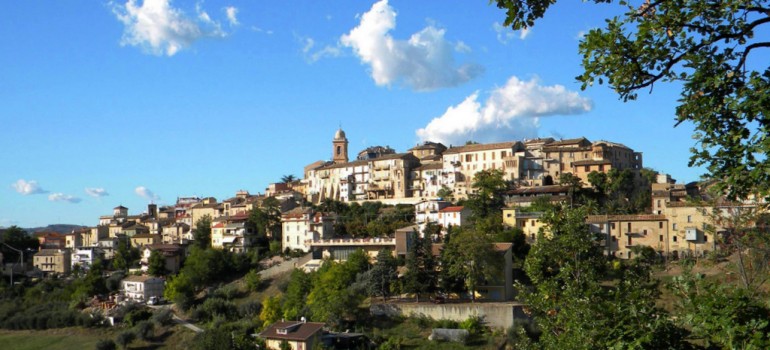
Monsampolo del Tronto is located on the left bank of the Tronto river 184 meters above sea level , with a view stretching from the Tronto Valley, to the Sibillini Mountains, Gran Sasso and the Adriatic Sea. The original name is Monti Sancti Pauli (1100) and alludes to the holder of the first castle church from which the town took its name. His story has ancient origins, archaeological evidence shows remains of the bronze and picena age and those of Roman and medieval times. In the village of Treazzano there is evidence of a settlement of the Bronze Age in which some Mycenaean finds dating to 1250-1100 BC, have been found documenting contacts between the peoples of the Aegean. The first written mention of medieval Monsampolo is contained in a donation dated 1031, to a wealthy landowner, Giso Alberto to the Church of Fermo . Then it is mentioned among the castles of the Fermo Committee. At the end of the thirteenth century, Rinaldo Monsampolo , submits the feud to Ascoli to get protection. During the 14th century together with other neighboring castles, it becomes a free commune. In 1425 the town was devastated by the papal troops . Then it was involved in struggles between the local noble families and was sacked by a band of robbers under the guide of Marco Sciarra ( 1591 ). For many centuries, along with Ascoli it was annexed to the Papal States, and only after the Risorgimento, in 1860 it became part of the Kingdom of Italy. In the historical center there are: the Church of the Assumption (XV – XVII) with important paintings of the 16th century, and wooden sculptures of the 14th and 15th centuries, and a processional silver cross attributed to P. Vannini (15th century). Inside the Chiesa dell’Addolorata there is an interesting painting of ” the Deposition of Christ” of the 16th century and interesting works of contemporary artists. In the former Convent of St. Francis built at the end of the 16th century, is located the Civic Museum divided into two sections: one dedicated to sacred art and one concerning the exposure of some of the most important books of the “Library of Thomistic Sant’Alessio”, There also is the Crypt Museum – the Archaeologycal Laboratory Museum, the Hypogeum trails dated of XVI-XVII centuries (trenches and tunnels which spread under the town walls) and Palaces Malaspina and Guiderocchi. In the hamlet Stella di Monsampolo there is a little SS. Benedict and Mauro Abbey which preserves a 10th century crypt.